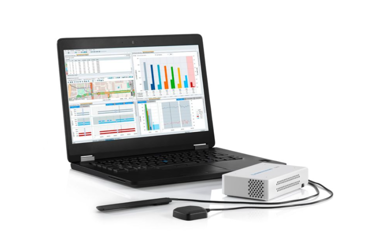5G Mobile Network Testing Using A Passive Network Scanner (Part 3)
By Corbett Rowell

The last blog post (part 2) explained the technical background and the setup of the measurements in FR1 and FR2. In this article we discuss how you can measure and analyze 5G networks passively by analyzing synchronization and broadcast signals.
5G Synchronization Signal Blocks (SSB)
5G NR technology uses orthogonal frequency-division multiplexing (OFDM) [1], [2] for the downlink transmission. A band dependent table in [3], [4] defines whether time division duplex (TDD) or frequency division duplex (FDD) is used to divide downlink and uplink. A 5G NR cell broadcasts SSBs (synchronization signal/physical broadcast channel blocks) in order to enable cell search and initial access.
Figure 1 shows a 5G NR SSB where one SSB is mapped to 4 OFDM symbols and 240 subcarriers (SC). The SSB consists of one PBCH block, a primary, and a secondary synchronization signal (PSS and SSS). For more details, please refer to the previous blog post: Part 2.
Get unlimited access to:
Enter your credentials below to log in. Not yet a member of RF Globalnet? Subscribe today.
